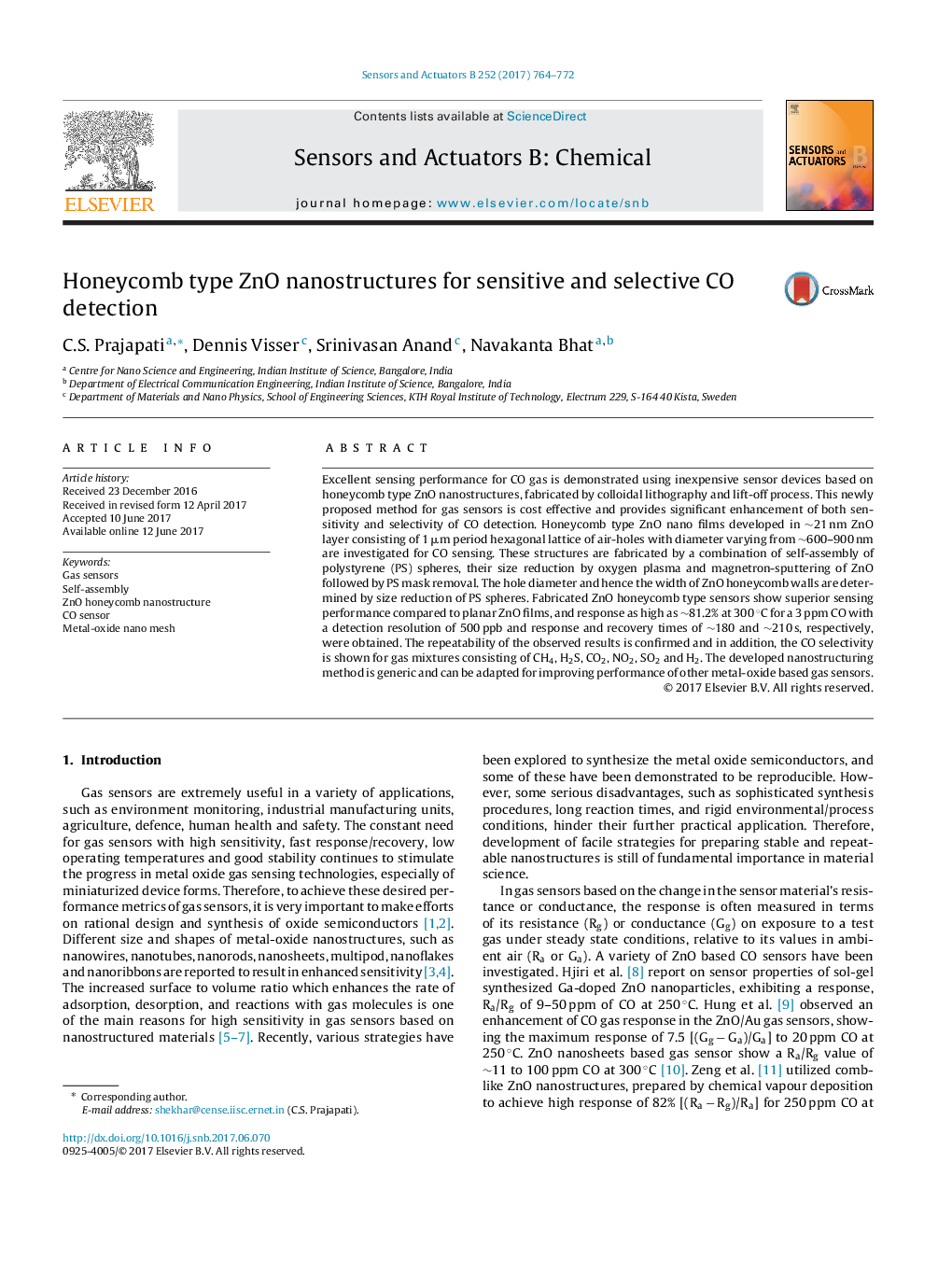| کد مقاله | کد نشریه | سال انتشار | مقاله انگلیسی | نسخه تمام متن |
|---|---|---|---|---|
| 5009130 | 1462039 | 2017 | 9 صفحه PDF | دانلود رایگان |

- ZnO honeycombs are made by colloidal lithography, sputtering and lift-off processes.
- ZnO nanostructures width is controlled by size reduction of colloidal particles.
- Sidewall widths of the ZnO honeycomb are tailored to obtain the best CO sensor.
- Sensors with narrow (â¼100Â nm) sidewalls are able to resolve 500Â ppb CO levels.
- CO sensor showed good selectivity over CH4, H2S, CO2, NO2, SO2 and H2 gases.
Excellent sensing performance for CO gas is demonstrated using inexpensive sensor devices based on honeycomb type ZnO nanostructures, fabricated by colloidal lithography and lift-off process. This newly proposed method for gas sensors is cost effective and provides significant enhancement of both sensitivity and selectivity of CO detection. Honeycomb type ZnO nano films developed in â¼21 nm ZnO layer consisting of 1 μm period hexagonal lattice of air-holes with diameter varying from â¼600-900 nm are investigated for CO sensing. These structures are fabricated by a combination of self-assembly of polystyrene (PS) spheres, their size reduction by oxygen plasma and magnetron-sputtering of ZnO followed by PS mask removal. The hole diameter and hence the width of ZnO honeycomb walls are determined by size reduction of PS spheres. Fabricated ZnO honeycomb type sensors show superior sensing performance compared to planar ZnO films, and response as high as â¼81.2% at 300 °C for a 3 ppm CO with a detection resolution of 500 ppb and response and recovery times of â¼180 and â¼210 s, respectively, were obtained. The repeatability of the observed results is confirmed and in addition, the CO selectivity is shown for gas mixtures consisting of CH4, H2S, CO2, NO2, SO2 and H2. The developed nanostructuring method is generic and can be adapted for improving performance of other metal-oxide based gas sensors.
Journal: Sensors and Actuators B: Chemical - Volume 252, November 2017, Pages 764-772